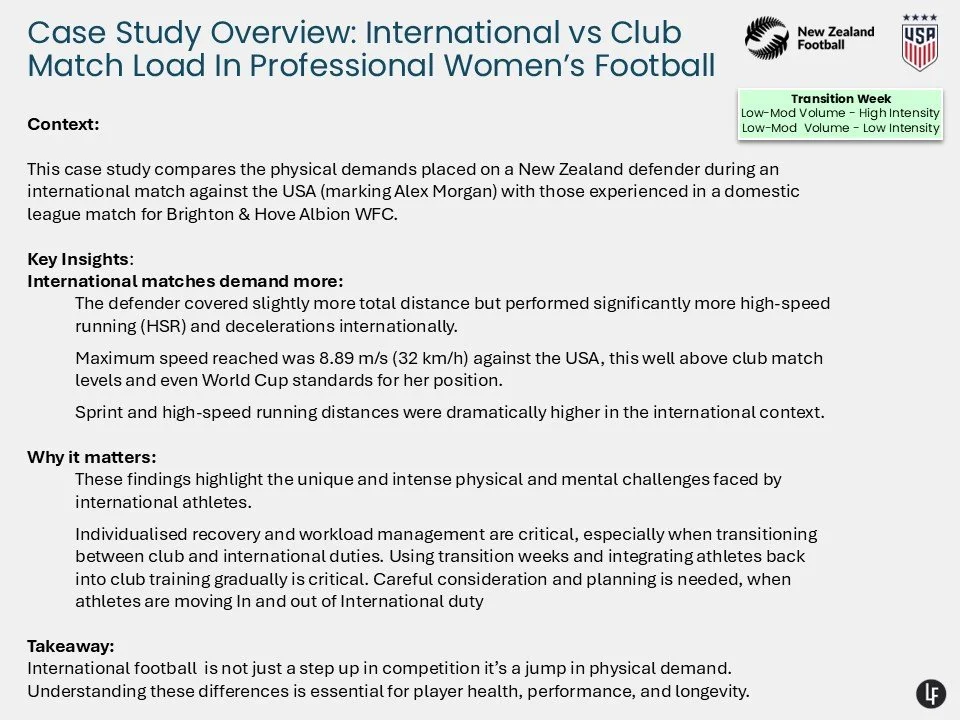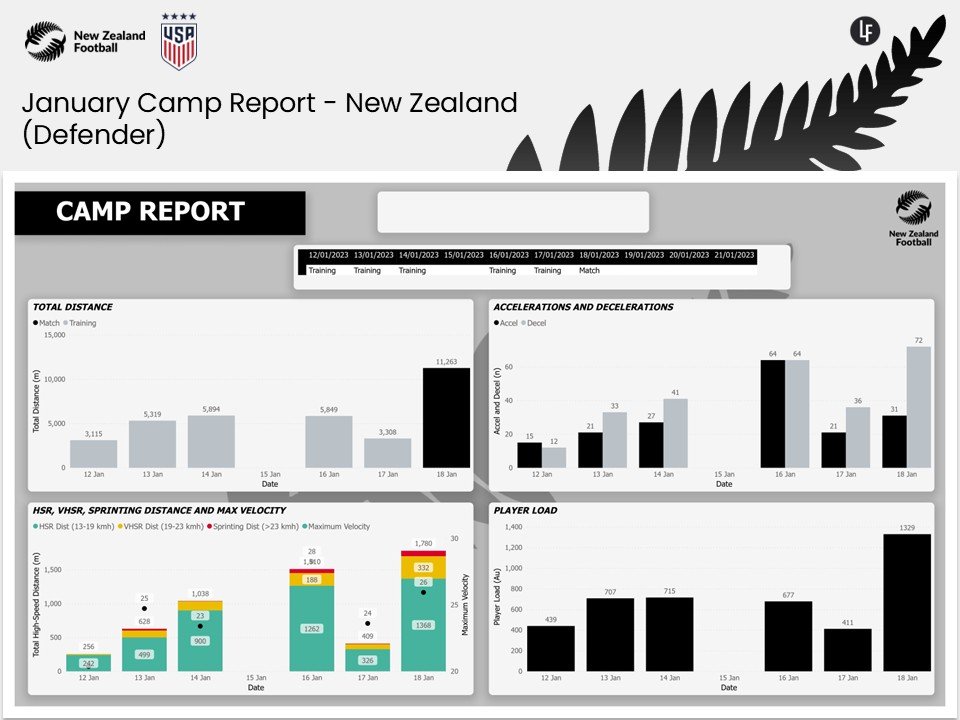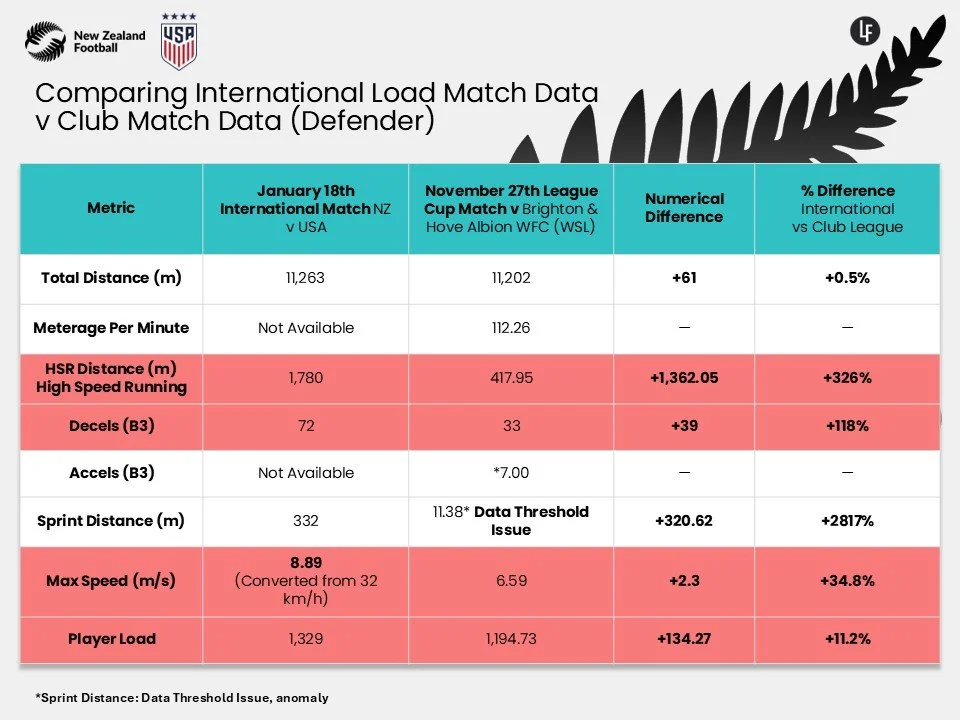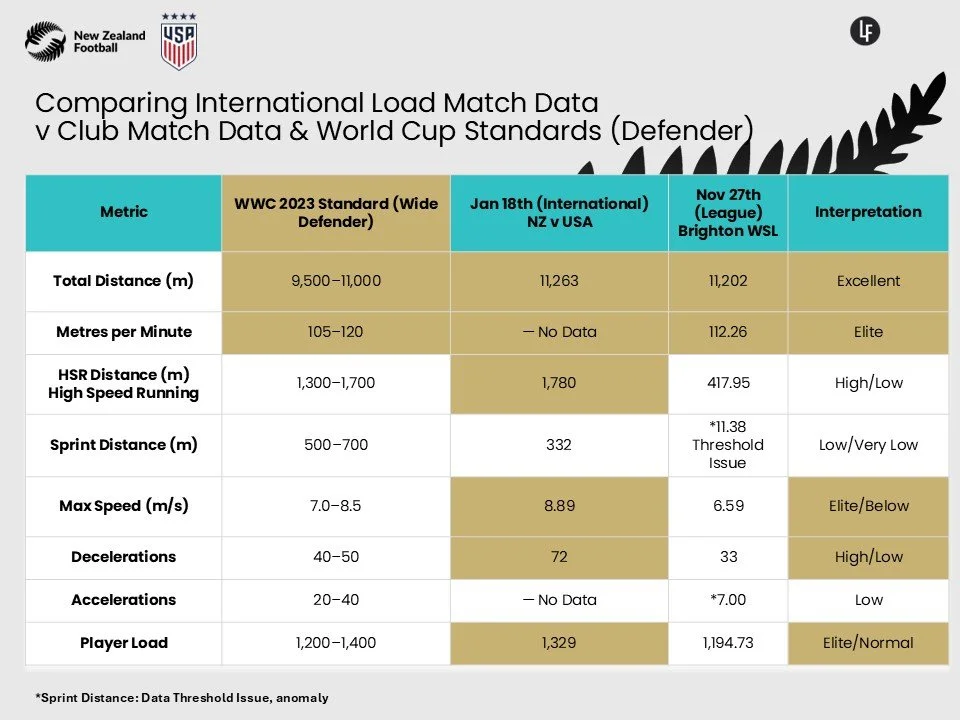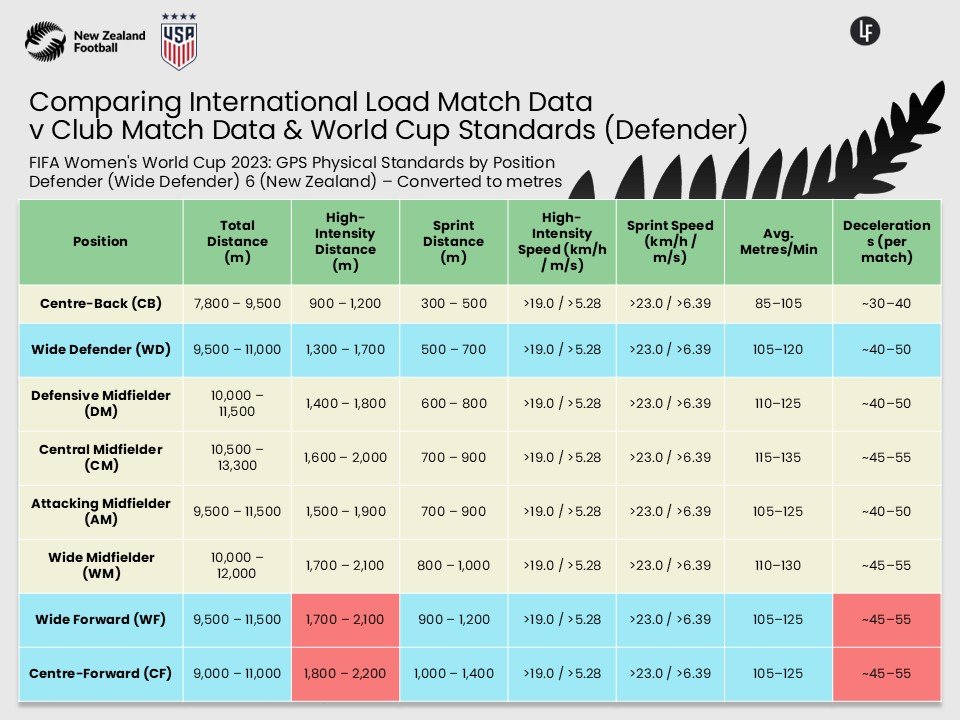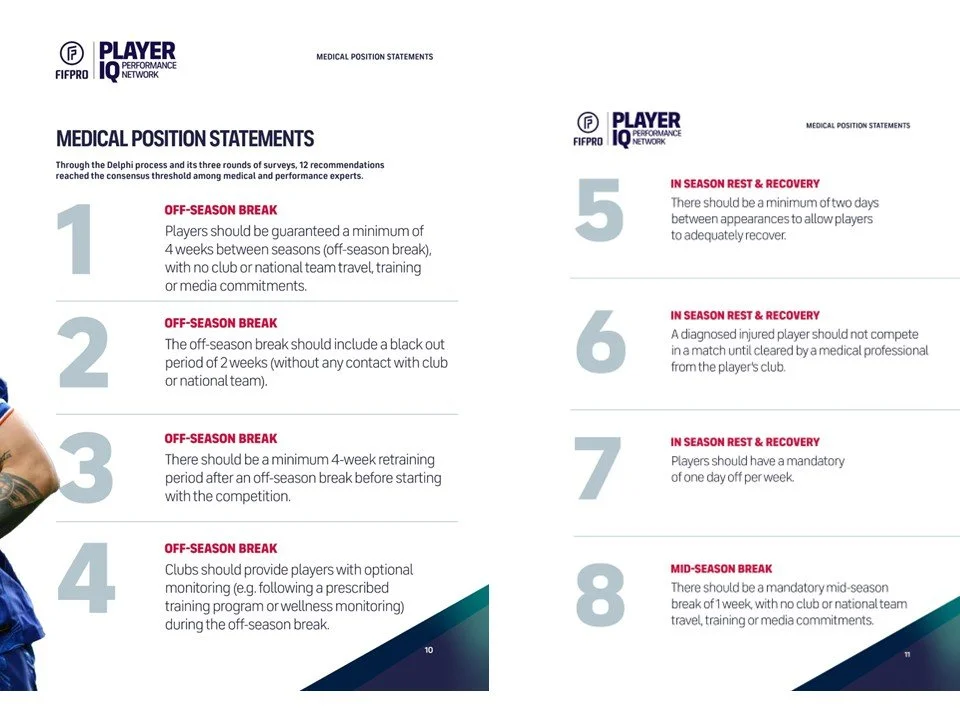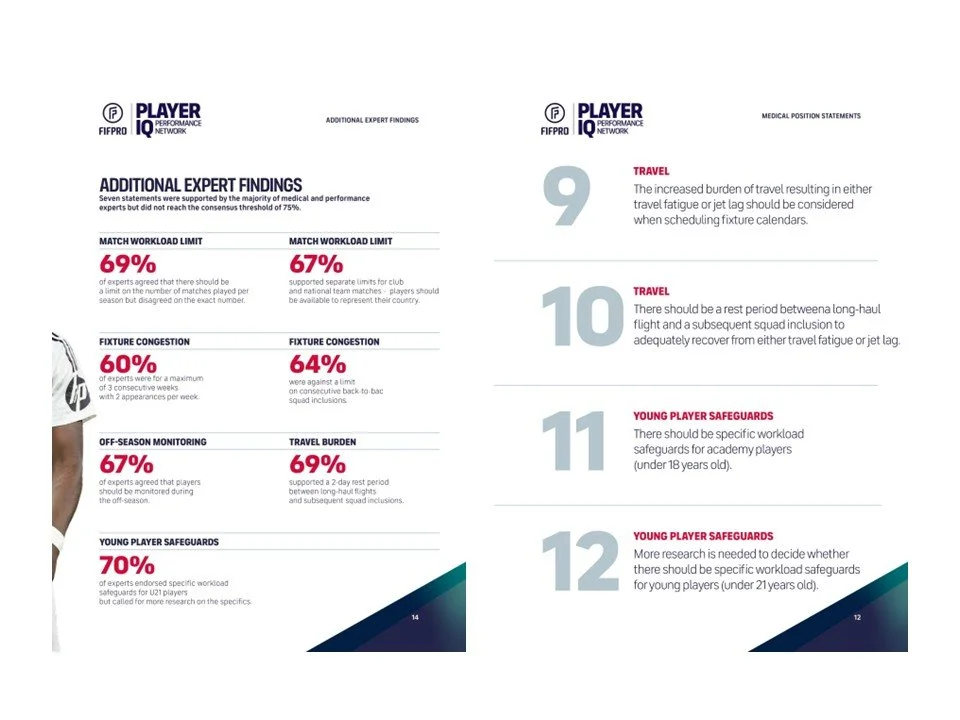Comparing International Match vs Club Match Loads
Comparing International Match
vs Club Match Loads
📌 ⚽ With the Women’s Euros fast approaching in July 2025, the focus is on the physical and psychological demands placed on international footballers.
🩺⚕️ Today, FIFPRO released a landmark consensus from 70 leading experts, establishing 12 evidence-based safety standards to protect athletes from excessive workload. These include guaranteed off-season breaks, retraining periods, and mandatory rest after long-haul travel, underscoring the urgent need for global standards.
🔍 This case study compares the match loads of a New Zealand defender (marking Alex Morgan) in an international fixture against the USA with her club performance against Brighton & Hove Albion WFC. This was a league cup match within the Barclay's Women's Championship. This was her first national camp & first match against the USA.
Key Findings
🔥Max speed: 8.89 m/s (32 km/h) internationally, well above her club level and even World Cup standards for defenders. This pattern isn’t unique, a Jamaican athlete in the Concacaf championships also showed progressively increasing speed across the tournament. As the quality of athletes in training and matches rises, all physical metrics are pushed higher.
🔥 High-speed running: 326% higher in the international match.
Decelerations: More than doubled internationally.
🔥 Overall load: International games can require defenders to work at or above the level of forwards.
🔥 While athletes may have a designated position, international football often requires them to perform at the physical level of entirely different roles. In this case, the defender’s match loads not only exceeded typical defender standards but, in several metrics, approached or surpassed those expected of forwards
(see FIFA Women’s World Cup 2023 standards)🏆
🔄 This demonstrates that positional labels can be misleading at the highest level. Match demands may require defenders to perform workloads equal to or greater than those of forwards, highlighting the need for broad preparation, individualised recovery, and careful workload management for elite athletes.
🏋️ Preparing athletes to manage demands across multiple positions is key. Training for durability and robustness is critical, particularly towards the end of the season.
1️⃣ Athletes at the Centre
🌟 As we look ahead to a summer of elite women’s and men’s football, it is vital that clubs, federations, and governing bodies heed these scientific recommendations and prioritise player welfare, on and off the pitch. This requires listening to athletes and providing the quality and care they deserve

